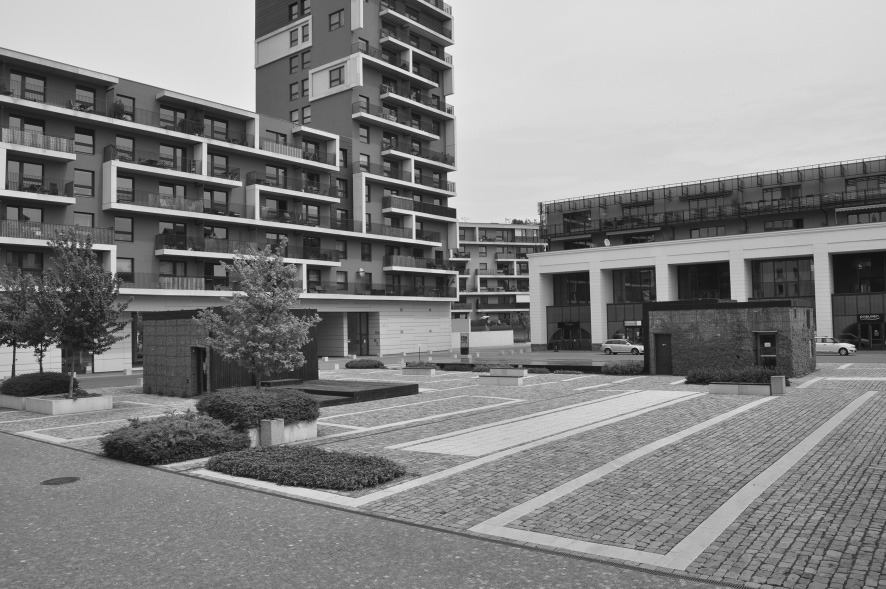The text addresses the issue of the spatial arrangement of new office and residential complexes built in the inner part of Prague during the post-socialist time. After 1990, the transformation of the Eastern bloc state of Czechoslovakia into the present Czech Republic led to the implementation of major economic and social changes, as reflected in the use of new spatial forms and development organisation.First, the economy was transformed from a centrally planned system to a liberal market model. As a consequence, local production was confronted with global competition. Many of the local factories did not succeed in the competition and were closed down, while others moved to the outskirts of the city. At the same time, cities started to lose their industrial character and emerge as centres of services, offices and culture.The construction sites in the inner parts of Prague that became available after the factories were removed had great development potential and exceptional value. Their close distance to the historical centre of the city, good accessibility by public transport and the open space left by the industrial footprint made them attractive for exclusive office and residential construction.Compared to the planned development that dominated the socialist area, the building process is now different. Development is not organized by the state or a cooperative but by private developers. In the case of inner parts of Prague the developers are typically strong companies embedded in the global network. Moreover, such a typology of investment shifts the development process from meeting the social and spatial needs of local people, such as housing, building schools, kindergartens or shops, towards an understanding of architecture primarily as a way of reinvesting the yield from other business activities. Consequently, architecture is understood as any other commodity on the stock market that serves towards the saving and recapitalization of financial recourses. Therefore, the important “value” of architecture has become its exclusive character, original solutions and distinctive design. Architecture as a commodity focuses on a small segment of clients who are economically well situated and globally networked. Sometimes called the ‘new middle class’, this is the group that brings the gentrification processes into the area. …

This work is licensed under a Creative Commons Attribution 4.0 International License.
